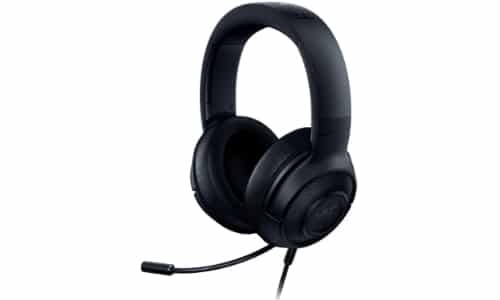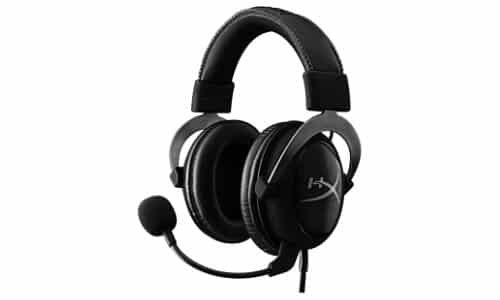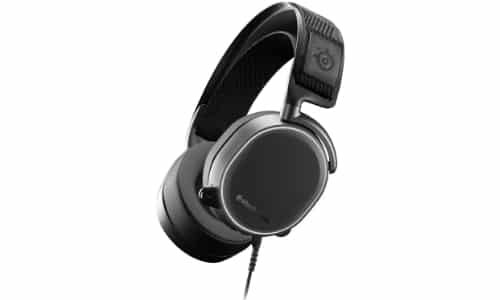You’re purchasing some equipment for your new stream, and you’re wondering whether it’s worth it to use your gaming headset as a streaming microphone since it’s working great. On the other hand, you always see other streamers with fancy standalone microphones and are wondering if you’re better off purchasing one yourself.
In this article, we will whether or not headphone mics are good for streaming, their audio quality, and how they compare to a separate microphone that stands alone.
Headset vs Standalone Mics for Streaming
There are several things that set headset and standalone mics apart. It all comes down to what you will need as both a gamer and a streamer.
Headset Microphone Pros and Cons
Here are some pros and cons for gaming headset microphones:
Pros:
- Convenience: You can move around without having to worry about speaking right into the microphone. If you turn your head, you will still be speaking directly into the microphone. Also, a headset microphone will not block your face while you are streaming.
- Versatility: Most headset microphones will work with multiple consoles such as PS4, Xbox One, and also a PC, without having to install complicated software.
- Price: You can purchase some headset microphones for relatively cheap compared to standalone microphones.
Cons:
- Microphone quality: Ultimately, headset microphones are built for the gaming experience, but not content creation. This means that the game sound quality on your headset will be great, but the microphone on the headset will be cheap. You may be able to increase the audio quality if you adjust the mic position, but it will likely never sound as good as a dedicated microphone for your desk.
- Battery life: For wireless headsets, you will need to constantly charge the battery, which means you cannot stream during that time.
- Comfort: Some headphones will feel a little uncomfortable after wearing them while streaming for many hours at a time.
Standalone Microphones Pros and Cons
Here are some pros and cons for standalone microphones:
Pros:
- Sound quality: Unlike headset microphones, a standalone microphone is specifically built for content creation. You will get a richer, fuller, studio-like sound that you will not get with a headset microphone, and you will notice the difference.
- Features: Most standalone microphones will also have many features that will enhance the sound they pick up. For example, the Blue Yeti microphone has four polar patterns to select from which will pick up different sounds for different purposes (such as streaming, podcasts, interviews, etc.)
- Professional look: When you are streaming, your audience will not only hear the difference, but they will also see that you mean business with a professional microphone.
Cons:
- Cost: Most standalone microphones will cost more than a regular gaming headset. On top of that, you’ll still need to buy earphones or a headset, because if you don’t, your standalone microphone will pick up your game audio. You will most likely have to buy other accessories such as a pop filter and a boom arm to help optimize the sound.
- Flexibility: For optimal sound, you will need to speak directly into the microphone, meaning that you can’t just get up, walk around, and start speaking to your audience and expect them to hear you.
Best Headset Mics for Twitch Streaming
Let’s look at three of the best gaming headsets at three different price points:

Razer Kraken X Ultralight Gaming Headset
Razer is one of the top-selling gaming peripherals brands in the United States, providing several audio products and accessories for your gaming setup. The Razer Kraken X Ultralight features immersive 7.1 surround sound and a bendable noise-canceling microphone that will eliminate background noise and increase the sound quality. As the name suggests, it is ultralight, at only 250 grams, and boasts a flexible, durable frame.

HyperX Cloud II
The HyperX Cloud II microphone has comfortable memory foam ear cushions, 7.1 virtual surround sound, noise cancellation, and a detachable noise-canceling microphone. HyperX is one of the best-selling gaming headset brands in the United States and it is compatible with PC, PS4, and Xbox One.
It is designed for comfort with its memory foam ear cushions and padded leatherette headband. IT has 53mm drivers to create supreme audio quality that will allow you to maximize what you hear in-game. There is also passive noise cancellation. The headsets are built to last and are solid and durable.

SteelSeries Arctis Pro High Fidelity Gaming Headset
The SteelSeries Arctis Pro microphone features a luxurious steel and aluminum alloy construction, next-generation surround sound, and a USB chat mix dial which lets you adjust the chat audio and game audio separately. The clear cast microphone offers voice clarity and noise cancellation. It comes with a retractable microphone that you can tuck away when you are gaming or watching a show on your own.
The adjustable band and quality ear pads are comfortable, allowing you to enjoy the quality sound for hours at a time. You can also adjust your sound sources (between gaming and chatting) directly from the headphones so that you can hear exactly what you want without having to deal with the high volumes of the game.
How to Make a Headset Mic Sound Better
Here are four ways you can give your headset (or even standalone microphone) superior sound quality compared to other headsets.
-
Positioning
You will want to position your headset microphone close to your face, but at least one inch away from your mouth, to get optimal sound. This is easiest to do with a boom microphone since the microphone is attached to the end of a boom, and you will be able to bend the boom to obtain the ideal positioning of the microphone.
Some headset microphones, such as inline microphones, are not adjustable. Play around with your wired headset, recording yourself until you are able to improve the microphone quality while reducing background noise.
-
Microphone Volume on Computer
If you’re using a PC, in your computer settings, you can click on “sound”, and select your microphone. You can then click on “device properties” and adjust the audio levels from there. If the sound is too loud, it will also sound loud and distorted on stream. If it’s too low, then your audience will not hear you properly while you are streaming. Finding a nice balance and testing it out is important.
-
Streamlabs Mixer and Audio Levels
You should also adjust your audio levels directly on Streamlabs. On the bottom, right side you will see your microphone audio levels along with the desktop audio levels. Again, this is something to test out since everyone’s microphones and computers are different. As a streamer myself, I have my microphone audio set at -2.9 dB, and my desktop audio set at -9.0 dB. I like having my microphone audio higher than my desktop audio so that my audience can easily hear me while I’m streaming.
-
Streamlabs Filters
There are three filters on Streamlabs’ audio interface that will make your microphone sound substantially better. Just like the audio settings on your computer, it is important you play around with the settings so that you can see for yourself what sounds best with your specific setup. Here are the filters:
- Noise suppression: This filter helps significantly reduce background noise such as the air conditioning in the background, or your computer fans.
- Limiter: This filter helps prevent your audio levels from peaking. This means that if you yell or speak loudly, your limiter will keep your speech volume below a specific level you set, and it will not startle your viewers.
- Noise gate: This filter will eliminate all unwanted sounds that are above and below a certain threshold that you set. This is commonly used to help eliminate keyboard and mouse clicking sounds.
Frequently Asked Questions
Should You Use a Headset Mic to Stream?
While the audio quality of a headset mic won’t be on the same par as a standalone mic, there are a few instances where it may be a good choice. For instance, if you tend to move around your space a lot, using a wireless headset may give you better audio quality overall when compared to a dedicated mic on your desk.
Another thing to consider is the overall cost of your stream setup. Unless you choose a mic like the Blue Snowball, high-quality gaming products can cost you a pretty penny that most don’t have at the beginning of their streaming journey. As long as your headset reduces external noises, but keeps your own voice crisp and clear, you should be able to get away with a headset. You can always upgrade to a desk setup with a shock mount, mic stand, and pop filter in the future.
What is the Most Popular Mic for Streaming?
In the past, the Blue Yeti Nano has been the go-to streaming mic. Not only does it boast high-quality audio, but this condenser mic comes with a mute button that you can use to silence your real noise (just be sure to un-mute yourself before you start talking to your viewers again!)
Recently, the Elgato Wave 3 has become a contender, offering more features that have been specifically designed for streamers, and the ability to sync with their other products. These USB mics offer excellent audio quality and come with software that allows you to change your voice, reduce latency issues, and adjust pickup patterns.
Conclusion
I would recommend you initially start streaming with what you have, especially if you are on a tighter budget. For most of you, it’ll be the gaming headset you’re using to game with your friends. For me, I started with my Turtle Beach Stealth 300 gaming headset, and it served its purpose at the beginning. Once the stream picks up some traction, and you decide you want to give it a real go, I would recommend picking up a standalone USB microphone, as there will be a noticeable quality difference.
That was when I decided to purchase my own USB microphone, the Blue Yeti. USB microphones are specifically designed for content creation. They will help you obtain a studio-like richer, fuller sound, which will certainly help yield better results for your streams in the long run.

Alex
Alex, also known as CallMeB27, is a Twitch streamer from Montreal, Canada. He earned his Master’s Degree in Business, Management, and Operations from Georgetown University. His biggest passions include video games, sports, and traveling.

